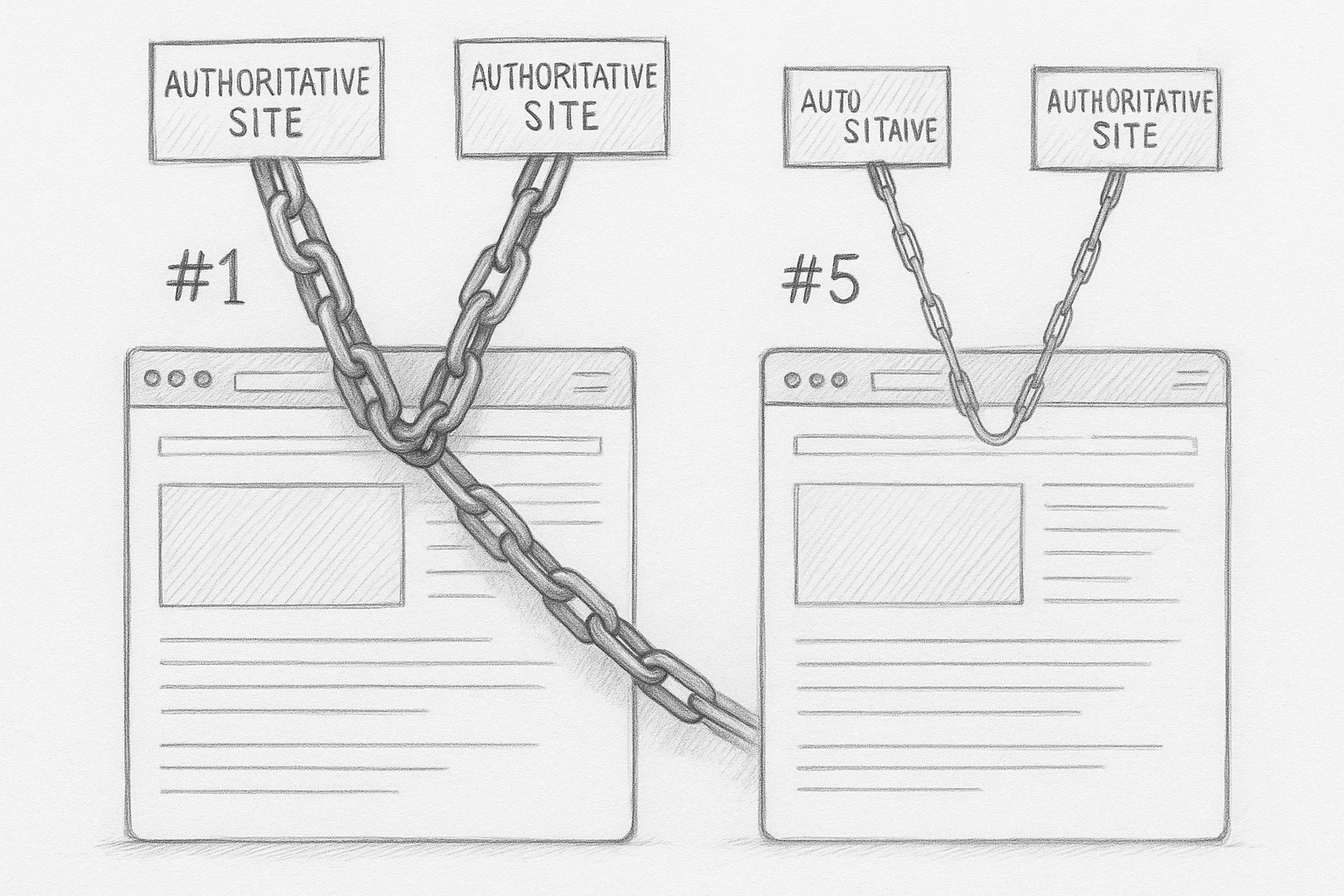Measuring SEO and metrics for success
SEO measurement isn’t just about tracking rankings—it’s about connecting search performance to business outcomes. For marketing leaders, understanding which metrics actually matter can be the difference between wasting resources and driving real growth.
Essential SEO metrics that actually matter
The foundation of effective SEO measurement starts with identifying the right metrics to track:

- Organic traffic: The volume of visitors coming to your site through non-paid search results, typically measured through Google Analytics
- Keyword rankings: Your position in search results for target keywords
- Conversion rate: The percentage of organic visitors who complete desired actions
- Backlink quality and quantity: The number and authority of sites linking to yours
- Core Web Vitals: Technical performance metrics that impact user experience and rankings
According to research, organic traffic accounts for approximately 53% of all website traffic, making it a critical channel for most businesses. Sites with high-quality backlinks typically see 2-3x higher rankings than competitors with weaker link profiles.

Tools for measuring SEO performance
Several specialized tools can help you track and analyze your SEO performance:
Free tools
- Google Search Console: Essential for monitoring impressions, clicks, CTR, and technical issues
- Google Analytics: Tracks user behavior, conversion paths, and attribution
- Google PageSpeed Insights: Measures Core Web Vitals and page performance
Paid tools
- Ahrefs: Excellent for backlink analysis, keyword tracking, and competitor research
- SEMrush: Comprehensive platform for audits, keyword tracking, and content gap analysis
- Moz: Focuses on domain authority metrics and link equity
For visualizing and reporting SEO data, data studio SEO report templates can help create dashboards that communicate performance effectively to stakeholders. These templates transform raw metrics into visual insights that even non-technical executives can understand at a glance.
Best practices for SEO measurement
1. Establish clear baselines
Before implementing any SEO strategy, document your current performance metrics. This provides a benchmark for measuring improvement. Use a website audit report to establish a comprehensive baseline that captures technical health, content performance, and competitive positioning.
2. Focus on business impact metrics
While rankings are important, they’re a means to an end. Focus on metrics that directly impact business outcomes:
- Organic traffic value: Estimated revenue from organic traffic
- Conversion rate from organic search: Percentage of organic visitors who convert
- Customer acquisition cost (CAC) from SEO: Cost of acquiring customers through organic search
The SEO ROI calculator can help quantify the financial impact of your SEO efforts by translating traffic improvements into actual revenue projections.
3. Segment your data
Break down your analysis by:
- Page types: Product pages vs. blog posts
- Search intent: Informational vs. transactional
- Device type: Mobile vs. desktop
- Geographic location: Different regions or markets
This segmentation reveals hidden patterns—for instance, you might discover that while overall traffic is up, conversions from mobile devices are declining, pointing to a potential UX issue.

4. Track technical SEO metrics
Technical issues can undermine even the best content strategy:
- Crawl errors: Pages Google can’t access
- Page speed: Loading time across devices
- Mobile-friendliness: Responsiveness and usability on mobile devices
- Indexation status: Whether Google is indexing your important pages
A free SEO analysis report can help identify these technical issues before they impact your rankings.
5. Monitor competitive positioning
Understanding how you stack up against competitors provides context for your performance:
- Keyword gaps: Keywords competitors rank for that you don’t
- Backlink profile comparison: Quality and quantity of competitor backlinks
- SERP feature capture: Who’s winning featured snippets and other SERP features
Think of competitive analysis as your market intelligence—it’s not just about outranking competitors but understanding why they rank where they do.
Calculating SEO ROI
Measuring the return on investment for SEO requires accounting for three key phases:
- Growth phase: Initial period of traffic increase from SEO efforts
- Hang time: Period where traffic maintains without active work (typically 12 months)
- Decay: Gradual decline if SEO efforts aren’t maintained
For accurate ROI calculations, consider:
- Total additional traffic over baseline
- Average conversion rate from organic traffic
- Average customer value
- Total cost of SEO implementation
Unlike paid advertising that stops delivering the moment you stop spending, SEO continues to generate returns long after the initial investment, similar to real estate rather than a utility bill.
Advanced measurement approaches
The 80/20 rule for SEO measurement
Focus 80% of your analysis on the 20% of metrics that drive the most business impact. For most companies, this means prioritizing:
- Organic traffic to high-conversion pages
- Rankings for high-commercial-intent keywords
- Backlinks from industry-relevant authoritative sites
This principle, also known as the Pareto Principle, prevents analysis paralysis and keeps your team focused on metrics that actually move the revenue needle.
AI-driven measurement
Modern SEO reporting solutions increasingly use AI to:
- Predict ranking changes before they happen
- Identify content optimization opportunities
- Automate insight generation from complex data sets
- Provide predictive analytics for future performance
ContentGecko leverages AI to help marketing leaders optimize their content strategy based on comprehensive SEO data analysis, transforming raw data into actionable recommendations that drive traffic growth.
Estimating potential traffic
Before implementing SEO strategies, estimating website traffic potential helps set realistic goals and prioritize efforts. This involves:
- Analyzing keyword search volumes
- Estimating potential click-through rates based on SERP position
- Accounting for seasonality and market trends
This predictive approach helps set proper expectations with stakeholders and ensures resources are allocated to keywords with genuine traffic potential rather than vanity terms.
TL;DR
Effective SEO measurement requires focusing on metrics that connect to business outcomes rather than vanity metrics. Use a combination of free tools like Google Search Console and paid platforms like Ahrefs or SEMrush to track performance. Establish clear baselines, segment your data, and calculate ROI by accounting for growth, hang time, and decay phases. The most successful SEO measurement strategies prioritize the 20% of metrics that drive 80% of business impact, and increasingly leverage AI for predictive analytics and automated insights.
